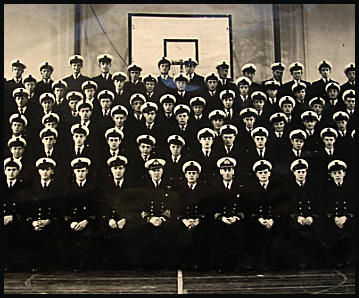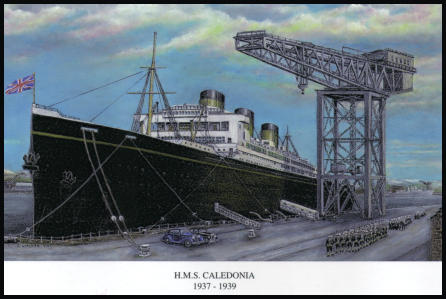© OCAAA 2009-2024
OCAAA
The Old Caledonia Artificer
Apprentices’ Association













About Us
Our Origins
Engine Room Artificers (ERAs) were introduced into the Royal Navy in about 1868 as it changed from sail to steam propulsion. Some Shipwrights transferred into this new branch, but most ERAs joined having completed their engineering apprenticeship as civilians, often in the Royal Dockyards. Eventually it was decided that the Navy should train its own artificers, who would be required to successfully complete a full engineering apprenticeship geared to the requirements of the Navy. These trainees were to be known as ‘Boy Artificers’. ‘Boy Artificers’ first appeared in the Royal Navy in about 1903. Initially, the apprentices were accommodated in old ships’ hulks at Chatham, Devonport and then Portsmouth. In the 1930s training was transferred to Chatham and Torpoint, with the later addition of HMS Caledonia at Rosyth, where annually youths of fifteen years of age were selected by examination in April and October to join up in the Engine Room, Electrical or Ordnance categories the following August or February. (This was changed to January and September during the war period). In 1938 this well-established system was opened up to include Air Artificers. Who were the ‘Artificers’ of the Royal Navy who did their apprenticeships at HMS Caledonia? They were the men who kept the engines turning, the guns firing, the ships floating, the electrical equipment working and the aircraft flying. They repaired and maintained all the equipment on His or Her Majesty’s ships wherever they were in the world. If a spare part could not be found they were expected to manufacture one from whatever was available on the ship. This may have been done during a battle at sea or (some would argue, even worse,) during training exercises, with Chiefs and Officers shouting orders at them. Artificers are no longer trained at Caledonia today, but the fleet still needs their unique skills to keep its ships and equipment in peak fighting order wherever it might be operating. Although the type of skills required have evolved with the technology, the Artificer still requires the self-confidence and knowledge that these men gained at Caledonia. Changes in the manpower demands of today’s Fleet, both qualitative and quantitative, have triggered further evolution and the last Artificers completed training and Passed Out from HMS Sultan in February 2010. 21st Century Artificers are now entitled “Engineering Technician”. The job hasn’t changed though, and the core skills bred over more than 100 years of naval engineering practice are as relevant today as they always have been.OCAAA History
HMS Caledonia was used for Artificer Apprentice training from 1937 to 1985. As many thousands of young men have undergone this training, it was felt that an Association should be formed to promote social activity between the former “boy arts” (as they were called.) This association was to be typical of many ‘reunion’ associations whereby the membership was to have the opportunity of meeting on a periodic basis and be kept in touch by newsletter or by personal contact. Prior to 1947 the Apprentices were together at HMS Caledonia for four years. From 1947 onwards they were at Caledonia for 32 months, having spent the previous 16 months at HMS Fisgard, and from 1969 they spent 28 months in the hallowed halls of “Cale”. (pronounced calley). Within this time great friendships were forged and the Association was to be an instrument to enable these friendships to be renewed.The first documented evidence of an embryo association are found in the minutes of the inaugural meeting held at HMS Caledonia on 10th April 1982 with about 20 people attending. A joining fee of £2.00 was set with an annual subscription of £3.00. Membership was to be limited to apprentices who served from 1937 to 1950. (In retrospect this is because apprentices from that year forward would have started their training at HMS Fisgard.) The committee would consist of secretary and treasurer whose responsibility it would be to draw up the ‘Rules of Association’ and area representatives would be appointed. What was called the ‘Final Reunion’ at HMS Caledonia was held on the 4th August 1984. It was organised by the staff of the establishment and many hundreds of ex-apprentices and ship's staff who had served there attended on the day. This was the last opportunity for such a reunion before the training of apprentices moved from HMS Caledonia to HMS Sultan. The embryonic Association took advantage of the occasion and held the second meeting on the same day. There were 35 members attending out of a membership of 79. At this meeting the funding was changed to a joining fee of £5.00 which would give membership for 5 years and a further payment of £5.00 would give life membership. Eligibility for membership was extended to anyone who had served in Caledonia in whatever capacity. A reunion was to be held biennially and newsletters were to be distributed as necessary. As there was a captive pool of potential members, the opportunity was taken to recruit.In 1987 a reunion was held at HMS Sultan to celebrate the 50th anniversary of the commissioning of HMS Caledonia for the training of apprentices. The current ‘Rules of Membership’ are basically the same except that there is now a one-off payment of £25.00 for life membership. There are now two newsletters distributed annually, which are also available on this web-site. The biennial reunions held in HMS Sultan at Gosport on an evening basis have now been replaced by weekend reunions held at different venues around the country. The latter was at the request of the membership who wanted more time to be with their friends and to justify the travelling and expense. The current membership numbers about 500, and it is hoped that these numbers will continue to grow as the existence of the Association becomes more widely known.Membership of OCAAA
Joining OCAAA couldn’t be easier! Just fill in the application form, available here - just print off the linked form. Write a cheque for £25, payable to OCAAA (don’t forget to sign and date it). Place your completed application and cheque in an envelope and send to the address on the form. We will acknowledge your application and membership by return. For overseas residents paying in currency other than £ Sterling, the membership fee should be converted to local currency and uplifted by 10% to cover OCAAA’s currency exchange costs. As the meerkay says; “seemples”!Articles of Association
A copy of the Articles of the Association can be obtained by following this link. This is the latest version of the articles and was ratified at the General Meeting held at The Hilton Hotel, Blackpool, on Sunday 8th May 2016.

















